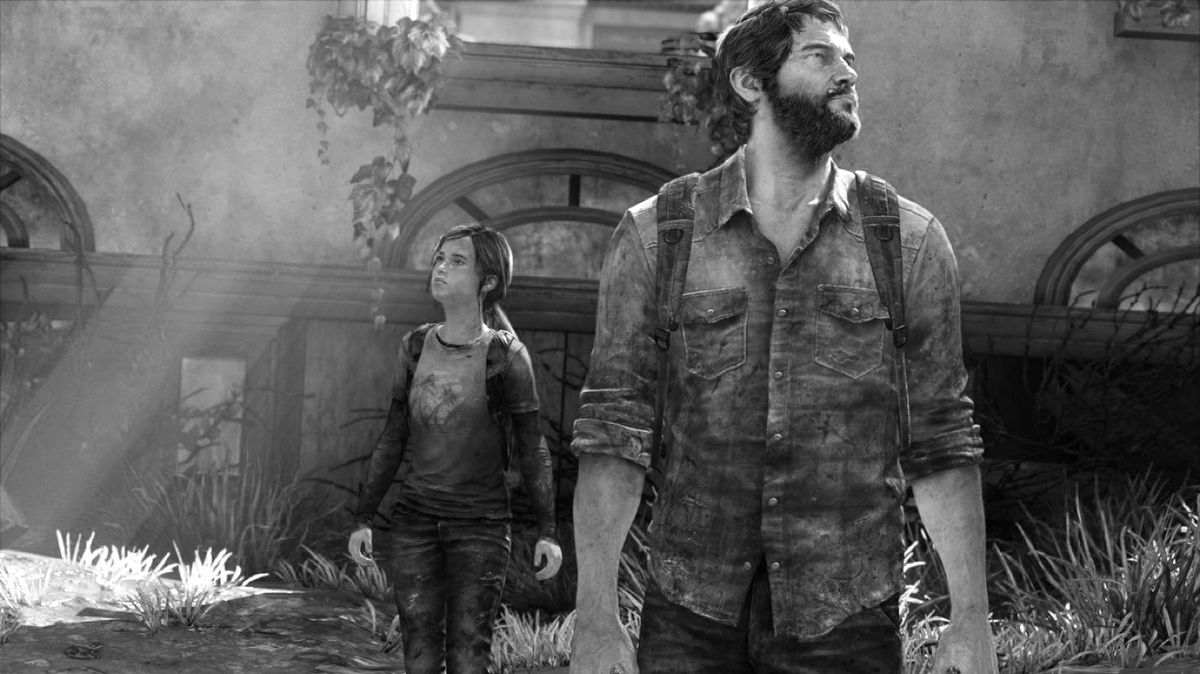Rejecting Violence Culture with Zombies

The day after I finished The Last of Us, near the end of my summer vacation, I was talking to my sister, who had, on-and-off, been watching me play through the game. When my sister asked me to catch her up on what she had missed one day, I described a series of moments and images I had witnessed. The general themes were loss, bitterness and the dimming light of hope. I witnessed suicide, the loss of children and numerous other difficult moments. I described the profound depression and malaise underlying the game. Upon overhearing us, my mother matter-of-factly asked, “Why would anyone play this?” Perhaps no comment better expresses the importance of The Last of Us and, for better or for worse, leads to why it is a worthwhile experience.
Set in a post-apocalyptic United States, The Last of Us is the story of two people, Joel (Troy Baker) and Ellie (Ashley Johnson), who are struggling to survive — in more ways than one. Joel is older and has suffered a large loss at the outset of a destructive, worldwide disease outbreak. At the outset, we learn that Ellie is functionally immune to the disease and is humanity’s only hope for survival. Yes, I groaned too: This is undoubtedly one of my least favorite story tropes in all of fiction. However, the game transcends this trite storyline through the ways in which its characters guide the narrative development.
Joel starts the game as a bitter, world-weary fighter striving for nothing other than physical survival, having mostly given up on others. But soon enough, circumstances put him in charge of Ellie, and Joel finds that survival after an apocalypse requires a reason to survive. 14-year-old Ellie was born after the outbreak, and struggles to survive in her own, more ambiguous ways. Having no grasp of life before the outbreak, unlike Joel, she wishes she could have something to miss. She wants a home, or at least some knowledge of what a home could be. In Ellie, one sees the internal battle between the childish aloofness and hardened wisdom that so many apocalypse stories strive for in depicting children. It is implied that neither of the main characters truly believes that anything will come of Ellie’s immunity, but still, it’s a means for survival beyond survival. It gives them something to tell themselves. The Last of Us is a game of grey, not black and white, and nowhere is this more true than with the central characters.
Much of why the characters are so compelling is owed to the writing and performances behind them. The decision to portray the actors as detailed above was intentional was because, more so than in many games, The Last of Us sells the characters as complicated, real human beings. These are performances as true as any committed to celluloid this year, and they form the backbone of the game. As the story begins, Ellie and Joel don’t talk much. Most of their conversations consist of Joel telling Ellie to duck or run when something is at risk of killing them. But as the game progresses, their relationship becomes more personal and intimate. What really sells the characters is the little touches. While walking around, Ellie will sometimes stumble upon a relic of the old world, taking a particular fascination with comic books. Upon seeing something, Ellie will immediately say something about it, and Joel’s player has the option either to respond or to pay no attention. Responding doesn’t change the outcome of the story, but it’s the most telling example of the developers’ commitment to selling the character and developing an emotional bond between them and the player.
Most videogames utilize dialogue to give the players information, having the characters say things which they should already be aware of to unnaturally convey to the player something they need to do or some bit of backstory. In “The Last of Us”, the characters dictate the story, and where most games would feel the need to “tell” the players everything, “Last of Us” lets Joel and Ellie speak to one another rather than past one another. If the player becomes frustrated due to a lack of information, that’s the whole point. This is an apocalypse, and no one in the narrative has all the information. In The Last of Us, information is a premium that the game wisely doesn’t always afford the player.
The philosophy that governing gameplay is an extension of a narrative that embraces ambiguity.. A typical situation you are faced with: you enter a room, and four or five guys approach you with guns. This is a staple of almost any video game. In an action game you would utilize your hundreds of rounds of ammo to decimate your confronters, paying no mind to a loss in health or resources. In a stealth game, you would quietly and cautiously stalk those confronting you, laying waste to them as you do in an action game, but more quietly and with less ammo consumption. These are the two mechanisms of survival present in most games: kill everything loudly or kill everything quietly while taking your time to do so. Either way, despite the game’s illusion of conflict, you’re basically in control, and the ultimate goal of the game is to be in control. Control constitutes survival.
The Last of Us rejects all of this. You can try to rush in and kill everybody loudly or quietly search around for every single piece of ammo you need to, but you’ll probably die again and again. Is this frustrating? Yes, but that’s the point. You aren’t in control, because you aren’t supposed to be. Other games are about perfecting your skills. The Last of Us is about realizing that your skills aren’t enough and that survival means adapting. Oftentimes, I would try to stealth a room only to be discovered after rendering one or two attackers unconscious. In any other game, the solution would be to start over and do it again in your quest for perfection. In The Last of Us, survival is the ultimate goal and surviving this situation for me constituted running, pure and simple. You are outgunned and outmatched throughout the game, and surviving isn’t about getting better but about making choices and living with the consequences.
Ultimately, this is the central reason why The Last of Us succeeds at conveying a sense of desperation where so many games fail. There’s an air of dread which permates every aspect of The Last of Us, and so many games try to accomplish this narratively but can’t translate it to gameplay.
On this note, The Last of Us is all the more compelling and all the more important for those aware of the history of the studio shipping it, Naughty Dog. Naughty Dog’s most acclaimed series of video games is the highly regarded Uncharted franchise. With Uncharted, brilliant set-pieces, fantastic camera angles, and fast-paced, kinetic, and frantic action is the name of the game. It is, however, a violence-fantasy series, in which completing every objective comes part and parcel with shooting or punching hundreds (and I do mean hundreds) of nameless one-dimensional cannon-fodder villains. In this light, it’s hard to play The Last of Us and not see it as a fascinating and admirable attempt to distance Naughty Dog from its flagship franchise. But it’s more than that.
The popularity of Uncharted isn’t unique. It’s one small portion of a system of consumerist violence and represents an example of the societal de-stigmatization to violence. Those who argue that people murder others because “video games tell them to” or because they see images in action movies glorifying violence are oversimplifying the matter, but so are those who see no link whatsoever. In the search for individual examples of video games causing specific instances of violence, we lose track of the fact that the prevalence of violence in video games is a reflection of larger systems of violence in society and that we would not readily go out to spend money on these products if they weren’t connected to marketing strategies rooted in glorifying violence, the same marketing strategies which play into support for the military and, more indirectly, other institutions dedicated to preserving societal violence and power inequalities.
Does The Last of Us actually break from these trends? At the end of the day, the gameplay design is not dissimilar from Uncharted. You run around with a left joystick on a controller, and aim with the right. Violence is at the heart of The Last of Us, just as it is with Uncharted. It isn’t as radical a break from this general gameplay philosophy as many smaller, independent games which are less tied into corporate structures of the perpetuation of violenc: Journey, Braid, Limbo, this summer’s Gone Home. The Last of Us works within the confines of AAA game design, but it also uses those very design structures to subvert our expectations of them, which is perhaps its most fascinating and provocative feature. Social justice advocates (especially those at elite institutions like Amherst) debate about whether to solve social inequalities by working through the unequal systems themselves, risking the compromise of one’s values, or by severing connections more fully and having little institutional backing. Similarly, it is possible to question the legitimacy of the game’s utilization of violence to challenge the degree to which most videogames treat murder and mayhem lightly is complicated and ambiguous. But that’s the point. Violence and utilization of it in Naughty Dog’s latest release is complicated and ambiguous to the point where there is no easy answer about how to act in any situation the game throws at you. It’s harrowing and unforgettable and will fry your nerves. It doesn’t break from the tenets of violence as a tent-pole of video-game marketing, but it is a massive step in the right direction. With a new generation of consoles launching later this year, it’s important to reflect on perhaps gaming’s biggest debate, whether this past decade represents “gaming growing up” as many hope or problematically reflects a generation of also-rans with little-to-no intellectual and emotional capital to match the investments in graphics improvements gamers love to tout. It’s hard to say where The Last of Us falls within this spectrum, but it represents both the potential of gaming as a thoughtful, interactive, emotional experience and the still-present shortcomings of a medium desperately trying to position itself as valuable “art” while also succumbing to the same consumerist, un-self-critical, tendencies of the industry.





Comments ()